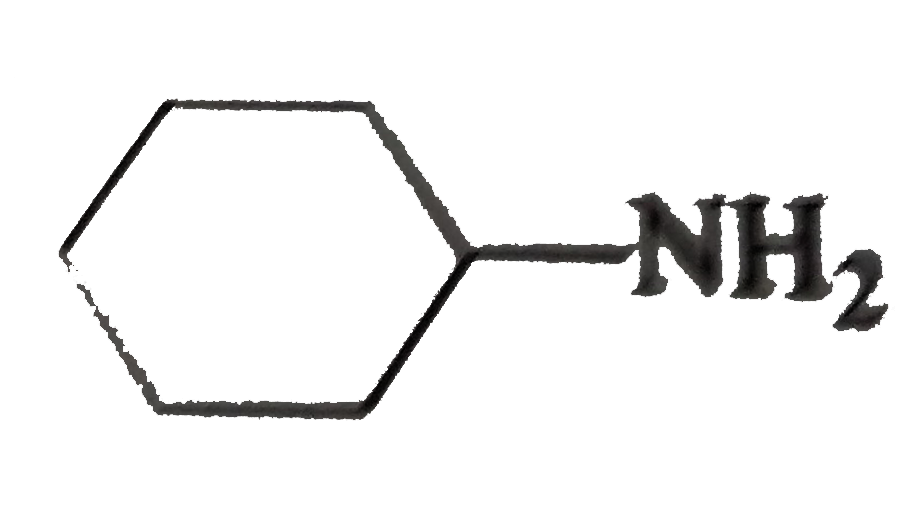Arrange the following compound in decreasing order of their basicity.
(a)HO− (b)NH3 (c)H2O
The correct Answer is:a>b>c
To arrange the compounds HO−, NH3, and H2O in decreasing order of their basicity, we need to analyze the basicity of each compound based on their ability to accept protons (H+).
1. Understanding Basicity: Basicity is defined as the ability of a compound to accept protons. The more readily a compound can accept a proton, the stronger the base it is.
2. Analyzing Each Compound:
- (a) HO−: This is the hydroxide ion. It has a negative charge, which indicates a strong tendency to accept protons. The presence of the negative charge enhances its basicity significantly.
- (b) NH3: Ammonia has a lone pair of electrons on the nitrogen atom, which can be used to accept a proton. Therefore, it is a good base, but it is less basic than the hydroxide ion due to the absence of a negative charge.
- (c) H2O: Water is a neutral molecule and has a lower tendency to accept protons compared to HO− and NH3. Its basicity is limited because it is more electronegative and less inclined to donate its electrons.
3. Comparing Basicity:
- HO− (hydroxide ion) is the strongest base due to its negative charge.
- NH3 (ammonia) is the next strongest base because of its lone pair of electrons.
- H2O (water) is the weakest base as it is neutral and less inclined to accept protons.
4. Final Order: Based on the analysis above, we can arrange the compounds in decreasing order of their basicity:
HO−>NH3>H2O
- (a) HO−: This is the hydroxide ion. It has a negative charge, which indicates a strong tendency to accept protons. The presence of the negative charge enhances its basicity significantly.
- (b) NH3: Ammonia has a lone pair of electrons on the nitrogen atom, which can be used to accept a proton. Therefore, it is a good base, but it is less basic than the hydroxide ion due to the absence of a negative charge.
- (c) H2O: Water is a neutral molecule and has a lower tendency to accept protons compared to HO− and NH3. Its basicity is limited because it is more electronegative and less inclined to donate its electrons.
- HO− (hydroxide ion) is the strongest base due to its negative charge.
- NH3 (ammonia) is the next strongest base because of its lone pair of electrons.
- H2O (water) is the weakest base as it is neutral and less inclined to accept protons.
HO−>NH3>H2O
Topper's Solved these Questions
- BOOK - MOTIONCHAPTER - GOCEXERCISE - Exercise - 4 Level - I13videos
GOC
- BOOK - MOTIONCHAPTER - GOCEXERCISE - Exercise - 4 Level - II14videos
GOC
- BOOK - MOTIONCHAPTER - GOCEXERCISE - Exercise - 2 (Level - II)114videos
GOC
- BOOK - MOTIONCHAPTER - GASEOUS STATE EXERCISE - EXERCISE-4( LEVEL-II)19videos
GASEOUS STATE
- BOOK - MOTIONCHAPTER - GRIGNARD REAGENTEXERCISE - EXERCISE-216videos
GRIGNARD REAGENT
Similar Questions
Knowledge Check
- Question 1 - Select One
Arrange the following compounds in decreasing order of basicity :
 AP>Q>R>SBQ>P>R>SCR>S>Q>PDQ>P>S>R
AP>Q>R>SBQ>P>R>SCR>S>Q>PDQ>P>S>R - Question 2 - Select One
Arrange the following compounds in decreasing order of acidity :
CH3CH2OH
H2C=CH2AR>Q>P>SBQ>R>P>SCS>R>Q>PDQ>P>R>S
Arrange the following compound in decreasing order of their basicity.
(a)H2C=CHNa (b)CH3CH2Na
(c)CH3CH2ONa (d)HC≡CNaView SolutionArrange the following in decreasing order of basicity:
 View Solution
View SolutionArrange the following compounds in decreasing order of acidity.
H2O,ROH,HC≡CHView SolutionArrange the following compounds in decreasing order of acidity.
H2O,ROH,HC≡CHView SolutionArrange the following compounds in the increasing order of their basic strength. CH3NH−Na+, C2H5NH2, (iso−C3H7)3N and CH3CONH2
View SolutionArrange the following compounds in decreasing order of acidity :
H2O,ROH,HC≡CHView Solution


 .
.